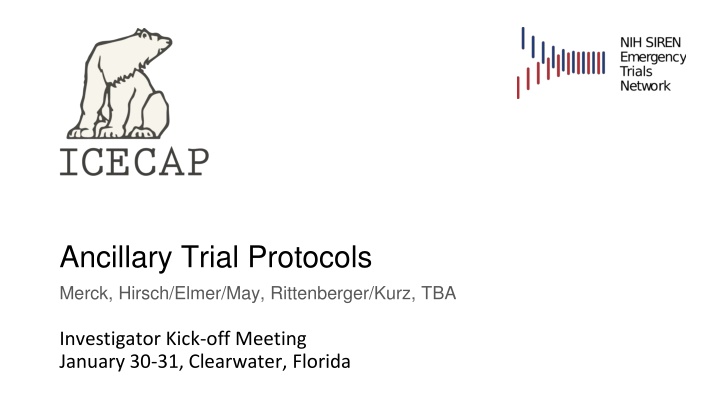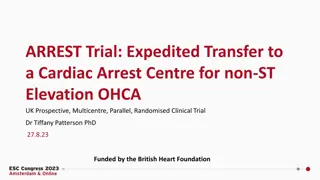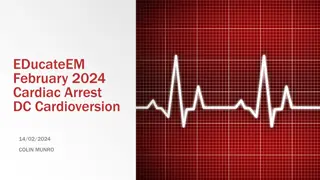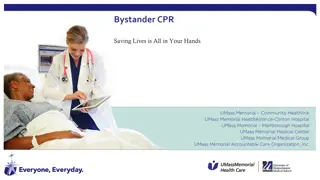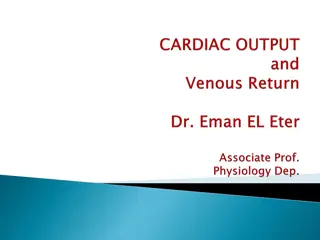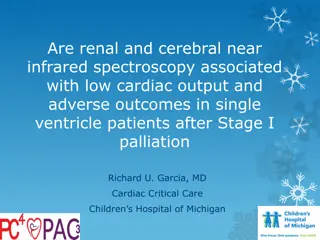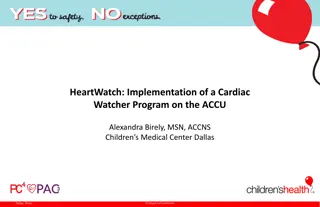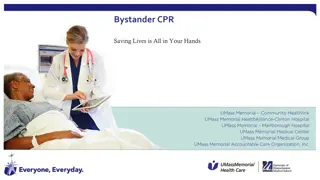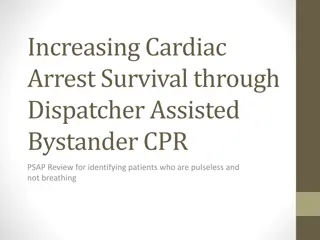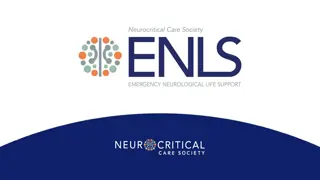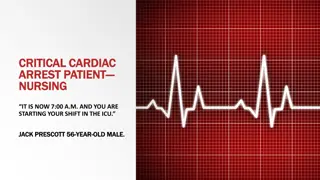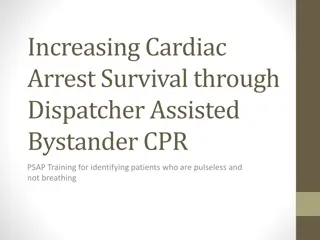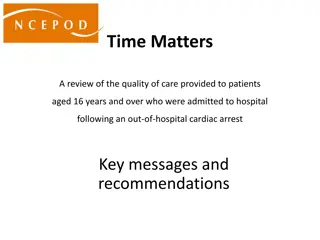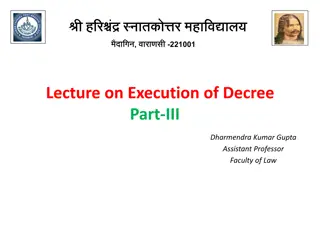Precision Medicine Approach for Post-cardiac Arrest Care Study
Study aims to develop novel biomarkers for optimizing hypothermia duration post-cardiac arrest and predicting 90-day function. Overcoming past limitations in neuroprognostication research, the study utilizes a multicenter approach and standardizes post-resuscitation care protocols. Addressing challenges such as small cohorts and clinical heterogeneity, this research emphasizes precision medicine to improve outcomes in cardiac arrest patients.
Download Presentation

Please find below an Image/Link to download the presentation.
The content on the website is provided AS IS for your information and personal use only. It may not be sold, licensed, or shared on other websites without obtaining consent from the author.If you encounter any issues during the download, it is possible that the publisher has removed the file from their server.
You are allowed to download the files provided on this website for personal or commercial use, subject to the condition that they are used lawfully. All files are the property of their respective owners.
The content on the website is provided AS IS for your information and personal use only. It may not be sold, licensed, or shared on other websites without obtaining consent from the author.
E N D
Presentation Transcript
Ancillary Trial Protocols Merck, Hirsch/Elmer/May, Rittenberger/Kurz, TBA Investigator Kick-off Meeting January 30-31, Clearwater, Florida
Multimodality Phenotyping (Tesla) Hirsch / Elmer / May
PRECICECAP PREcision Care In Cardiac ArrEst - ICECAP
Multidisciplinary Study Team Jonathan Elmer, University of Pittsburgh Teresa May, Maine Medical Romer Geocadin, Johns Hopkins Zihuai He, Stanford University
Study Background and Aims The type and severity of post-arrest illness vary across patients, can be quantified, and predict treatment responsiveness. Systemic physiology is inextricably linked to brain (dys)function. It is time to move beyond prognostication for poor outcome. We must harness precision medicine to identify subgroups in order to deliver the best therapies and improve outcomes. Aim 1: Use advanced analytical approaches to create novel biomarkers from multimodality high-resolution data and test these markers against established predictors to determine optimal duration of hypothermia after cardiac arrest. Aim 2: To evaluate the performance of novel and established biomarkers to predict 90-day function.
Major limitations in past neuroprognostication research Past limitation Importance How PRECICECAP addresses Limited population in derivation cohort Small cohorts and single-center designs lead to uncertainty and limits generalizability Multicenter approach will allow broad population inclusion and increased generalizability Post-resuscitation care not standardized Heterogeneity in clinical care leads to difficulty attributing effect of interventions Clinical standardization protocol of ICECAP will define posts-resuscitation care Care teams have access to diagnostic test being studied, leading to confounding Neural network approach allows for unbiased approach to data analysis Lack of blinding Heterogeneous diagnostic testing and withdrawal of life-sustaining therapy Sites differ in their approach to withdrawal of life-sustaining therapies Clinical standardization protocol of ICECAP defines prognostication approach Definitions of good and poor outcome vary between studies, and outcome scales have significant limitations Primary outcome of mRS is a recommended outcome and will be assessed by trained assessors Non-standardized outcomes Do not account for medications, hypothermia and organ dysfunction Confounding due to medications, shock, organ failure and hypothermia CRF from both ICECAP and PRECICECAP will allow for detailed assessment of these factors
Multi-Modal Data Collected at Participating Sites February 5, 2020! (T-5 days) Preliminary sites selected Fingers crossed Data Transmitted to Central Repository (IBM Cloud and DCC) Data Quality Reviewed, Annotation and Artifact Rejection Multi-Step Data Featurization Novel Biomarker Signatures (Subgroups) Developed Novel Biomarkers and Standard Features Compared Aim 1: To predict treatment response Aim 2: To predict patient outcome (khirsch@stanford.edu)
Blood Phenotyping Bio ICE (Honda) Rittenberger / Kurz / Et al.
Premises Cardiac Arrest is NOT a binary disease Witnessed/Unwitnessed Shockable/Not Shockable Cardiac/Not Cardiac Any intervention will help some and hurt some TPA in stroke early- good TPA in stroke late- bleeding risk higher
PCAC 1. Awake 2. Coma, Some Reflexes, Mild Shock 3. Coma, Some Reflexes, Severe Shock 4. Missing Brainstem Reflexes Derivation - Rittenberger 2011; Resuscitation 82: 1399-1404 Validation: Coppler 2015; Resuscitation 89:86-92
What about TH/TTM? OR for survival to hospital discharge 33 C vs 36 C PCAC 2: OR 0.71 (95% CI 0.44-1.16) PCAC 3: OR 2.22 (95% CI 1.16-4.25) PCAC 4: OR 2.72 (95% CI 1.32-5.63) Callaway, et al. 2020 (in review)
Aims Determine the optimal duration of therapeutic hypothermia (TH) in adult comatose survivors of cardiac arrest based on initial illness severity. Determine how accurately longitudinal changes in biomarkers of brain cell death and coagulation dysfunction predict clinical outcome. Determine the treatment effect of TH duration on: 1) brain cell death; 2) coagulation dysfunction.
